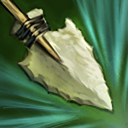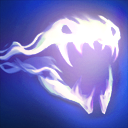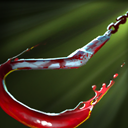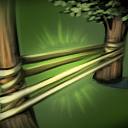Support Guide - Developing Advanced Skills
Sando
October 17, 2012
Introduction
After the feedback from my last guide, I've been trying to work on a guide for intermediate players who want to push on further. This has proved a little tricky, as it's easy to start providing opinion rather than facts as you move into more advanced territory!
The other thing I found was that a lot of what I was writing wasn't specifically for Support players, but applies more generally. So, I've decided to post up this guide in a partially complete form, and get some feedback on where it can be improved.
Please note, this guide is currently a draft and needs formatting, has missing sections etc!
Map Awareness
What is it?
This is mentioned in a lot of articles, and people are always talking about "good" and "bad" map awareness - but what do they actually mean?
People may have their own definition of this, but personally Id say it comes down to two main factors:
- Getting the information
- Using this information to make good decisions
Getting the Information:
The first one sounds so simple...you've got a mini-map in the corner of the screen, you should always know where people are, right? Well, yes, but this is a skill to be developed. Especially when you first start playing the game, you can be so focused on last-hitting, denying, positioning and everything else that you dont pay enough attention to the mini-map. Try to get used to checking it frequently, even a quick glance can tell you a lot.
The mini-map is a vital source of information the lane positions, ward locations and positions of friendly and enemy heroes. Maybe you dont know the positions of some enemy heroes and that should concern you!
Obviously, warding is a vital part of map awareness, and should reinforce their value to your team. Some hero abilities can also help here  Templar Assassin and her traps, Windrunners
Templar Assassin and her traps, Windrunners  Powershot or
Powershot or  Vengeful Spirits
Vengeful Spirits  Wave of Terror can scout out unseen areas, as can the different minions that many heroes summon, for example
Wave of Terror can scout out unseen areas, as can the different minions that many heroes summon, for example  Venomancers Plague Wards.
Venomancers Plague Wards.
Making Good Decisions:
Noticing what is happening on the mini-map is a vital first step, but youve then got to interpret what is means, and how to respond to it.
First of all, even with both  Bounty Hunter and
Bounty Hunter and  Slardar on the team, plus a full complement of
Slardar on the team, plus a full complement of  Observer Wards set out, youre unlikely to have complete information about where all of the enemy players are at various times.
Observer Wards set out, youre unlikely to have complete information about where all of the enemy players are at various times.
This means that a certain amount of guesswork and instinct comes in to play. Where was the last place you saw that hero on the map? Did they seem to be heading in any particular direction? Are they a ganker, jungler or carry? What are they likely to be doing? What time of day is it?
Youre not going to be right 100% of the time, but try to keep improving your prediction. Try to keep a rough picture in your head of where enemies are and what theyre likely to be trying to do.
Now youve figured this stuff out - do you need to do anything to respond? If theres probably a gank incoming you should probably be heading back to the tower straight away. Sure, you might miss out on a bit of farm and xp, but the enemy will be wasting far more on a failed gank.
Bear in mind that map awareness can also be used offensively is there an enemy hero massively out of position and begging to be ganked...or is he bait? Is your lane in a good position for your mid to come and gank? Did you see the enemy jungler on low health just then?
Heres an example to illustrate:
The enemy team has picked a NightStalker as their solo mid player. You know that hes a dangerous ganker at night, but that he needs a good start and lots of kills in order to be effective.
Unless you can give him a truly atrocious start, hes going to be roaming and dangerous as soon as the first night starts at around 6 minutes. So how do you deal with him?
First of all Wards! Hes going to have to cross the river to get to your team, and unless hes got an invisibility rune, your team should know about it. Next, you have to be aware of when you dont know where he is, or when hes moving towards your lane.
If you can survive that first night with minimal losses, hes really going to struggle to be effective in the game and most of this is due to good map awareness.
Strategic Awareness
This is another factor which informs your map awareness. Strategic awareness is having a reasonable idea of how the game is likely to develop, and what each team will be trying to do.
Try and get a feel for how your team and the enemy one match up. Which team has better gankers? Pushers? Team Fight? Carries? This determines your strategy are you trying to win early or late? What will they try to do?
Individual heroes can also have signature playstyles too for example  Pudge is likely go mid, and try to gank the other lanes fairly early on. If youre on his team, should you be looking at filling in mid while hes roaming? Have you made sure you lane is well setup for ganks? That youve got enough mana for your stun when he starts approaching the lane?
Pudge is likely go mid, and try to gank the other lanes fairly early on. If youre on his team, should you be looking at filling in mid while hes roaming? Have you made sure you lane is well setup for ganks? That youve got enough mana for your stun when he starts approaching the lane?
Alternatively, if the  Pudge is the other team, have you changed your ward placements to make it easier to spot him? Are you aware of common hook spots? Have you altered your lane position when hes disappeared from the mini-map?
Pudge is the other team, have you changed your ward placements to make it easier to spot him? Are you aware of common hook spots? Have you altered your lane position when hes disappeared from the mini-map?
In these ways, strategic awareness helps map awareness even if you cannot see an enemy hero, you can at least take an educated guess at what they will be trying to do!
How to Improve your Map Awareness
Ok, so now you know a bit more about what it is and why its important. So what can we do to improve it? Here are some tips:
- Get into the habit of regularly quick-checking the mini-map every 5-10 seconds (obviously not while in fights, etc). Ideally you should reach the point where youre subconsciously doing this without thinking about it
- Dont get so focused on farming that you forget to keep checking the mini-map. This is a common mistake for new players.
- Try to evolve your understanding of the game by spectating and watching replays. After a while you should often be able to predict whats going to happen before it does. Apply this to your own games.
- Start spotting for other players as well. Notice an enemy gank coming in on another hero? Ping and warn them.
- Practice, practice, practice!
Positional Play – what does it actually mean?
Its a good question and again, we probably all have our own answers to this. Personally, Id say there are three parts to this:
- Positioning during laning and ganks
- Positioning leading up to and during team fights
- Being in the right area of the map
Positioning during Laning
Your position on the lane will vary from game to game depending on the heroes involved and the situation.
As you play, you should begin to be able to work out roughly how a lane setup will develop depending on the heroes present on both sides. The personality and skill of the players will also have an influence.
Good lane positioning is mostly dependent on the skills that your opponents have; against a  Pudge you want to keep a meatshield of creeps between you and him at all times to block his
Pudge you want to keep a meatshield of creeps between you and him at all times to block his  Meat Hook. Against a Windrunner the reverse, as she can
Meat Hook. Against a Windrunner the reverse, as she can  Shackleshot one of them to you. Know your opponents.
Shackleshot one of them to you. Know your opponents.
Secondly, be aware of your partner (youll usually have one as support) are they dropping back? Do they want to attack? You need to try and stay close enough to be able to help each other, but not so close that youre blocking each other or making an easy target for AOE abilities.
Finally, be aware of the Body Language of your opponents how are they moving? Are they suddenly standing a lot closer? Has one of them just reached level 6? Has their mid disappeared from the mini-map?
Positioning for Ganks
If youre coming in to gank a lane (as a support this should generally be done with friends), here are some tips:
- Check that the friendly heroes in that lane are in a good state to help with the gank. Heroes on low health and/or mana may not be able to help as much as you would like
- Check that the lane is reasonably pushed out to avoid tower diving where possible
- Try to approach unseen whenever possible. Good warding by the enemy team can make this difficult
- Stay hidden until the right moment to strike. Giving away your position can let the enemy get away or call in friends to counter-gank you
Being in the right place at the right time
This sounds simple, but making the right decisions is one of the most important skills in DOTA, and for many situations it is difficult to make hard and fast rules.
Here are some basic guidelines to bear in mind though:
- Carries are more important than other heroes. If you lose a support hero to kill an enemy carry, thats a good trade
- Higher tier towers are more valuable than lower tier ones - taking their level 2 at the cost of your level 1 is worthwhile
- Barracks are very important, and unless you are in their base trashing their ancient, you should always defend them
- Deny towers where possible - the gold loss to their support heroes is damaging BUT
- Dont fight where you cant win. Losing a tower cheaply is bad - losing a tower and a kill at the same time is worse
Roaming
What is it?
Roaming is moving between lanes, very early in the game, looking for ganks on enemy heroes. Its a high risk strategy that can be very beneficial or very damaging to your team.
What is there to gain?
Successful early game ganks give your team a lead in gold and experience, making it easier for them to win their lanes. The fear factor of successful roaming can keep the enemy on the back foot and reluctant to farm as much as they could.
What is there to lose?
Being out of lane during the early game can leave you badly under-levelled if you dont successfully gank enemy players. Youll be in some dangerous positions and potentially open to being ganked yourself.
When should you do it?
First of all, you need a hero that has a good early game slow or stun, such as  Vengeful Spirit,
Vengeful Spirit,  Earthshaker or
Earthshaker or  Venomancer
Venomancer
Next, the lane partner that you will be (temporarily) with needs to able to solo effectively. Some heroes actively benefit from the extra experience they gain from having a lane to themselves, and can happily survive without you.
Another situation where you might go roaming is when youve already accrued a good advantage in your own lane, and want to aggressively spread that advantage to other lanes.
Maybe youre up against a solo opponent, and your carry doesnt need you to support him.
Stacking and mini-jungling
Maybe your hero isnt cut out for roaming, or maybe you feel this is just too risky a strategy for this game. Your other option when your carry doesnt need you to support them is to go mini-jungling.
You might have a support hero who is already a reasonable jungler, such as  Enigma or
Enigma or  Dark Seer. You can disappear into the jungle with a few borrowed creeps from the lane and farm away. Even non-junglers can actively be pulling creeps, using them to farm the neutrals and keep their lane controlled.
Dark Seer. You can disappear into the jungle with a few borrowed creeps from the lane and farm away. Even non-junglers can actively be pulling creeps, using them to farm the neutrals and keep their lane controlled.
This has the added advantage of separating the gold and experience that you and the nearby carry are accruing. You both get 100% of the experience for enemy/neutral creeps, and the chance to get last hits.
Be sure to stack up your pull camp first, or use a double pull to completely eliminate your creep wave, and farm as much as possible. Be careful not to pull a siege wave, as your tower is likely to be damaged.
You can also stock up your jungle (especially your Ancients) for later in the game. Generally carries worry about the efficiency of their farming, so tend to take whats there rather than stacking it first. You have the time to do this for them, meaning their gold income will be higher.
Dont forget about the lanes
When you disappear off the mini-map for extended periods of time, the enemy are initially going to be cautious, but then slowly relax again. When youre in the jungle its possible to pop up unexpectedly in both the middle and safe lanes if an opportunity presents itself.
Advanced Lane Pulling Techniques
TBC - with precise timings
Once you get used to pulling from the nearby medium creep camp, you can start experimenting with more exotic ones. Here are some examples:
Radiant Mid-Lane Pull
tbc
Dire Easy Camp Pull
If your medium pull camp has been warded, or is unavailable for any other reason, you can use the easy camp instead. This can also work well if youre jungling and your safe lane players need their lane pulled.
Bear in mind that this camp is a fair distance from the lane, and that the relatively weak creeps will die fairly easily without doing much damage to your wave. Therefore it really needs to be stacked and/or double pulled with another nearby camp.
Pull the lane at **** to reach the lane in time.
Dire Second Pull Camp
The furthest left Dire jungle camp can actually be used by either team to pull their lane.
The Dire team can simply use it as a backup camp if their main pull camp has been warded, or is currently empty. Wait until **** and then draw the creep aggro, before running up diagonally left back to the lane.
The Radiant team can use it to slow or disrupt the lane too use a  Tango or
Tango or  Quelling Blade to cut through one of the trees on the left of the camp, and then draw the neutrals straight back to the lane at ****.
Quelling Blade to cut through one of the trees on the left of the camp, and then draw the neutrals straight back to the lane at ****.
Be aware that for both teams this is a more risky pull generally youll be pulling creeps right from the area where the two waves are likely to be meet, and there might well be a fight over which team gets to harvest them.
Using Minions to Stack, Pull and Divert
Several heroes such as  Nature's Prophet and
Nature's Prophet and  Enigma get access to minions early on. With a bit of micro-management, you can use them to perform any of the normal stacking and pulling this is especially useful for stacking as it allows you to do multiple camps where normally you could only really do one per minute.
Enigma get access to minions early on. With a bit of micro-management, you can use them to perform any of the normal stacking and pulling this is especially useful for stacking as it allows you to do multiple camps where normally you could only really do one per minute.
Minions can also pull for you, just be careful not to send a group that is then stunned by a Centaur stomp.
Minions can also divert lanes for you. The creep AI in DOTA will chase enemy units well away from their lane, provided they can still see them, and are not getting aggro from another source. They will then find the closest point on their usual path, and return to it.
You can use this to your advantage, especially when in a difficult solo long lane. Send one of your minions to the enemy pull spot, and either block the spawn, or draw away the enemy creeps. You can then run the minion back through the jungle to your tower (and you), bypassing your own creep wave, and farm them up gold and experience.
Tri-laning
This term gets bandied about a lot...but what does it actually mean? At its simplest, its just having 3 heroes in the same lane, but the when and why to play it is much more complex.
This has the obvious advantage of giving you a much stronger and more dangerous lane - but on the flip side, each hero present is now only getting 33% of the experience from it. It also means that your two other lanes can only have 1 hero each.
What are the different kinds of Tri-Lanes?
You could possibly argue that having a standard 2 safe lane + 1 jungling hero is a tri-lane; and it kinda can be depending on how its played (i.e. if the Jungling hero is frequently helping with pulling and ganks). But a normal Jungler who doesnt get involved in the lane much is not really a tri-lane.
Defensive Tri-Lanes
This would usually be 1 hard carry, plus 2 support heroes in the safe lane. The purpose of it is to ensure that the hard carry will get farm safely, and quickly grow strong.
Between them, the two support heroes can easily keep the lane pulled and the enemy hero(es) either dead or extremely cautious. Your support heroes should have dangerous early level stuns or slows, e.g.
 Crystal Maiden,
Crystal Maiden,  Tidehunter,
Tidehunter,  Venomancer,
Venomancer,  Witch Doctor,
Witch Doctor,  Vengeful Spirit,
Vengeful Spirit,  Earthshaker etc
Earthshaker etc
+ Almost guaranteed farm for your hard carry
+ Can easily get first blood if you setup the initial gank properly
+ Makes it very difficult for the enemy heroes to get gold/experience
+ Unusual in pub games so can catch out many players
- Means your other lanes have to play solo
- You have to pick the right heroes to make the lane work
- Can be somewhat countered by the enemy only putting a single hero against you
- Each hero receives less experience, and only 1 can farm
Aggressive Tri-Lane
This is an even more unusual tactic, and rarely seen in pub games. Basically you put three heroes in the long lane, or even a jungler into the enemy woods. This can work if the enemy team is very reliant on their safe lane carry getting farm, and can also be deployed against a defensive tri-lane.
To make this work, you need to get kills to compensate for the lost experience on your heroes. Good warding is also very important you cant afford to let the enemy pull the lane and keep it close to their tower (unless youre going to push it early), or for their other players to gank you unexpectedly.
+ Can severely hamper their main carry
+ Good chance for first blood
+ May be able to get the tower early and make their jungle dangerous to farm
+ Forces opposition to respond to you
- Means your other lanes have to play solo
- You have to get kills to make the lane work
- Each hero receives less experience
- Risk of counter-ganks is higher than a defensive tri-lane
How do you counter tri-lanes?
Usually you have two options when faced with an enemy tri-lane; just fighting on with 2 heroes against 3 is very risky unless theres a big skill difference:
- Fight fire with fire. The enemy will have a solo in one of your other lanes, one of the players from there can come and balance the numbers
- Abandon the lane. Theres no point having two heroes getting minimal farm and experience leave a solo player to get what they can and try to stop the tower being pushed too fast
Which option you pick will very much depend on your team composition if you have a good solo hero, good gankers etc, whether your carry can do well against their solo, etc.
Fluid Formations
As you can see, there are few hard rules for how to lane. The traditional 2-1-2 formation is a useful starting point, but you have to be flexible with your thinking and laning.
Styles like Roaming, Jungling and Tri-laning can overlap a lot. In one games laning phase you could start off in a tri-lane, mini-jungle briefly, roam for some kills and then end up back in the jungle.
You dont need to confine yourself to one style; just ensure that what youre doing is beneficial to the team.



















Quick Comment (8) View Comments
You need to log in before commenting.